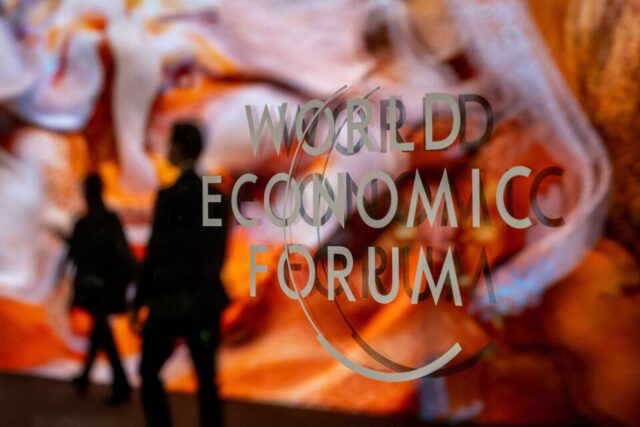The World Economic Forum has warned of weak economic growth and very high inflation for the sub-Saharan Africa region in 2023 as prospects of a global recession remain evenly balanced.
THE WORLD Economic Forum (WEF) has warned of weak economic growth and very high inflation for the sub-Saharan Africa region in 2023 as prospects of a global recession remain evenly balanced.
In its Chief Economists Outlook report released on Tuesday, the WEF said at least 63% of more than 40 chief economists surveyed expected weak economic growth in the sub-Saharan Africa region, while 33% were expecting moderate growth.
Growth in sub-Saharan Africa is expected to slow for the second consecutive year to 3.6% as a “big funding squeeze”, tied to the drying up of aid and access to private finance, hits the region.
The WEF said that sub-Saharan Africa, Latin America and the Caribbean regions were confronting a difficult mix of headwinds: tepid global conditions, policy uncertainty, weak investment environments and some of the highest inflation rates globally.
Meanwhile, at least 74% of WEF chief economists said expectations of moderate inflation in the January survey had now given way to expectations of high and very high inflation.
At the other end of the spectrum, three-quarters of the chief economists still expect weak or very weak growth in Europe this year.
In the US, respondents were more optimistic in March-April than in January but were still divided on the outlook, with US growth prospects clouded by heightened uncertainty on financial stability and the likely pace and extent of monetary tightening.
As a result, the economists were evenly divided on the prospects for the global economy, with equal shares of 45% saying that a global recession this year was likely or unlikely.
The most buoyant activity is expected in Asia, with China’s reopening expected to drive a significant rebound for the country and to bolster activity across the continent.
Accordingly, 93% of chief economists expect at least moderate growth in East Asia and Pacific, with 39% expecting strong or very strong growth. The outlook for South Asia is broadly similar, with 92% expecting at least moderate growth, and 36% expecting strong or very strong growth.
Recent fragility in the banking sector in the US and UK has made the path more uncertain, and the possibility of further tighter monetary policy amid higher debt levels is a risk to the global growth outlook.
WEF managing director Saadia Zahidi said the continuing uncertainty of the global economic outlook was reflected in the striking spread of responses to the report.
Zahidi said chief economists were expecting both growth and inflation dynamics to vary widely across regions, while on the economic policy front a majority were predicting proactive industrial policy to become an increasingly widespread phenomenon over the next three years.
“Labour markets are proving resilient for now, but growth remains sluggish, global tensions are deepening, and the cost of living remains acute in many countries,” Zahidi said.
“These results confirm the urgent need for both short-term global policy co-ordination as well as longer-term co-operation around a new framework for growth that will hard-wire inclusion, sustainability and resilience into economic policy.”
In South Africa, gross domestic product (GDP) has been revised significantly lower to 0.2% for 2023, from 1.4% previously forecast in October 2022, on the back of increasing domestic constraints. Load shedding remains the largest impediment to growth and is estimated to subtract 2% from the growth rate in 2023, with 250 days of power cuts expected this year from 157 days in 2022.
Meanwhile, Momentum Investments said global stagflation risks had materialised and recession risks remained in some advanced economies, and downside risks to the growth outlook remained elevated.
Momentum economist Sanisha Packirisamy said risks to the global inflation trajectory also remained high, placing pressure on central banks to keep interest rates higher for longer.
“The material impact of load shedding on inflation can partly be explained by the assumption that 67.1% of businesses have opted for generators as an alternative source of energy, which means more businesses are incurring higher operational costs (fuel) which may be passed on to consumers,” Packirisamy said.
“The cost of powering generators is estimated to be 133% higher than procuring power from the municipal grid. Moreover, 90% of the costs are estimated to be passed on to consumers. “The impact is expected to be larger in 2023 compared to last year because of a higher incidence and severity of load shedding.”
– BUSINESS REPORT








